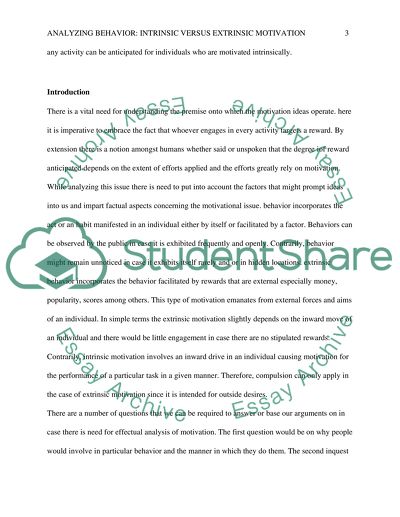Cite this document
(“Analyzing Behavior: Intrinsic Versus Extrinsic Motivation Research Paper”, n.d.)
Analyzing Behavior: Intrinsic Versus Extrinsic Motivation Research Paper. Retrieved from https://studentshare.org/psychology/1496944-analyzing-behavior-intrinsic-versus-extrinsic
Analyzing Behavior: Intrinsic Versus Extrinsic Motivation Research Paper. Retrieved from https://studentshare.org/psychology/1496944-analyzing-behavior-intrinsic-versus-extrinsic
(Analyzing Behavior: Intrinsic Versus Extrinsic Motivation Research Paper)
Analyzing Behavior: Intrinsic Versus Extrinsic Motivation Research Paper. https://studentshare.org/psychology/1496944-analyzing-behavior-intrinsic-versus-extrinsic.
Analyzing Behavior: Intrinsic Versus Extrinsic Motivation Research Paper. https://studentshare.org/psychology/1496944-analyzing-behavior-intrinsic-versus-extrinsic.
“Analyzing Behavior: Intrinsic Versus Extrinsic Motivation Research Paper”, n.d. https://studentshare.org/psychology/1496944-analyzing-behavior-intrinsic-versus-extrinsic.


